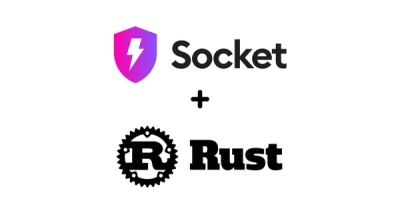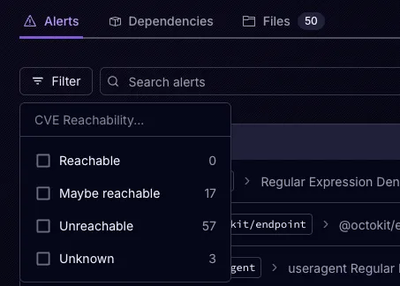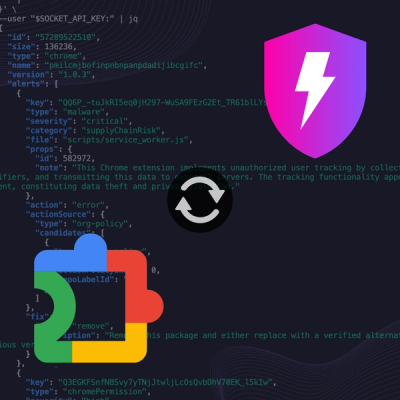
Product
Introducing Rust Support in Socket
Socket now supports Rust and Cargo, offering package search for all users and experimental SBOM generation for enterprise projects.
@react-three/gpu-pathtracer
Advanced tools
⚡️ A React abstraction for the popular three-gpu-pathtracer.
These demos are real, you can click them! They contain the full code, too. 📦 More examples here
3D model by KuayArts (@kuayarts) on Sketchfab.
react-three-gpu-pathtracer lets you render your react-three-fiber scenes using Path Tracing! It is as simple as
import { Pathtracer } from '@react-three/gpu-pathtracer'
function GradientSphere() {
return (
<Canvas>
<Pathtracer>{/* Your scene */}</Pathtracer>
</Canvas>
)
}
<Pathtracer />The <Pathtracer /> component wraps your scene. The scene is then rendered using Path Tracing.
| Prop | Type | Default | Description |
|---|---|---|---|
samples | number | 1 | Number of samples |
tiles | THREE.Vector2 | number | [number, number] | [1, 1] | Number of tiles |
bounces | number | 3 | Number of ray bounces |
paused | boolean | false | Pauses rendering if set to true |
enabled | boolean | true | Disables Path Tracing is set to false |
renderPriority | number | 1 | Render priority for internal render loop |
resolutionScale | number | 0.5 | Scaling factor for resolution. 0.5 means half of screen resolution |
background | Partial<PathtracerBackground> | See below | Options for the background. |
PathtracerBackground| Prop | Type | Default | Description |
|---|---|---|---|
type | 'Environment' | 'Gradient' | 'Environment' | Type of background |
blur | number | 0.5 | Strength of blur on env map when type is Environment |
intensity | number | 1 | Strength of env map when type is Environment |
top | THREE.ColorRepresentation | #444444 | Top color of gradient when type is Gradient |
bottom | THREE.ColorRepresentation | #000000 | Bottom color of gradient when type is Gradient |
usePathtracerThis hook provides access to useful functions in the internal renderer. Can only be used within the <Pathtracer /> component.
const { renderer, clear, update, refit, render } = usePathtracer()
| Return value | Type | Description |
|---|---|---|
renderer | PathTracingRenderer | Internal renderer. |
clear | () => void | Clear's the textures. Equiv to renderer.reset() |
update | () => void | Re-calculates and re-uploads BVH. Needed when new objects/materials are added to/removed from the scene. |
refit | () => void | Re-fits (NOT re-calculate) the BVH. Cheaper then update(). Can be called instead of update() when any object's transforms change |
render | (samples?: number, paused?: boolean) => void | Runs one instance of the internal render loop. can be used to control the internal loop in combination with enabled={false} |
usePathtracedFramesUse this hook to execute a callback after each frame is done rendering. Can be used to render out frame rate independent videos or images straight from the canvas.
We recommend you the library canvas-capture to capture each frame and render it out as a video or image sequence like in this example.
const { start, stop } = usePathtracedFrames({
frames: 60,
samples: 300,
onStart: ({ gl }) => {
CanvasCapture.init(gl.domElement)
CanvasCapture.beginVideoRecord({ format: CanvasCapture.WEBM, name: 'vid', fps: 60 })
},
onFrame: (_, renderer, dt) => {
CanvasCapture.recordFrame()
},
onEnd: () => {
CanvasCapture.stopRecord()
},
})
| Props | Type | Default | Description |
|---|---|---|---|
frames | number | 1 | Maximum number of frames to capture. |
samples | number | 3 | Samples per frame. |
onStart | (state: RootState) => void | undefined | This callback runs before the first frame. |
onFrame | (state: RootState, renderer: PathTracingRenderer, delta: number) => void | undefined | This callback runs after each frame is rendered. |
onEnd | (state: RootState) => void | undefined | This callback runs after the last frame. |
| Return value | Type | Description |
|---|---|---|
start | () => void | Starts the capture. |
stop | () => void | Stops the capture. |
Note: The capture is stopped once the prescribed
framesare rendered.
react-three-gpu-pathtracer also attaches a few custom properties to the renderer. They can be accessed through renderer.__r3fState. Here are the properties:
| Props | Type | Description |
|---|---|---|
initialized | boolean | This flag is set to true as soon as the renderer is initialized. |
frames | number | Frame count since last reset. Resets when clear(), refit() or update(0) is called. |
samples | number | Sample count for each frame. Resets each frame. |
FAQs
⚡️ A React abstraction for the popular three-gpu-pathtracer.
The npm package @react-three/gpu-pathtracer receives a total of 256 weekly downloads. As such, @react-three/gpu-pathtracer popularity was classified as not popular.
We found that @react-three/gpu-pathtracer demonstrated a healthy version release cadence and project activity because the last version was released less than a year ago. It has 23 open source maintainers collaborating on the project.
Did you know?

Socket for GitHub automatically highlights issues in each pull request and monitors the health of all your open source dependencies. Discover the contents of your packages and block harmful activity before you install or update your dependencies.

Product
Socket now supports Rust and Cargo, offering package search for all users and experimental SBOM generation for enterprise projects.

Product
Socket’s precomputed reachability slashes false positives by flagging up to 80% of vulnerabilities as irrelevant, with no setup and instant results.

Product
Socket is launching experimental protection for Chrome extensions, scanning for malware and risky permissions to prevent silent supply chain attacks.